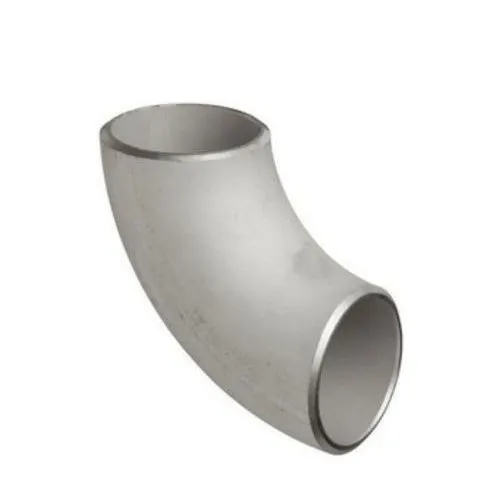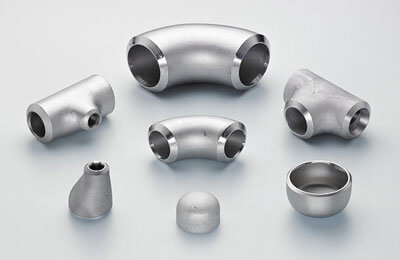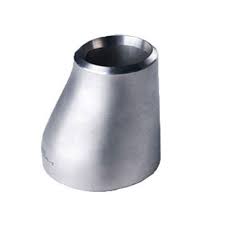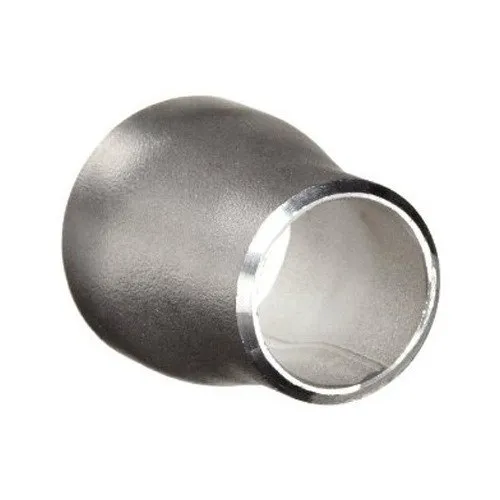
What is a butt weld elbow? A butt weld elbow is a type of pipe fitting used to change the
304 stainless steel pipe fittings are components used in piping systems that are made from AISI 304 stainless steel, also known as UNS S30400. This type of stainless steel is one of the most commonly used stainless steel grades and is part of the austenitic stainless steel family.
Share:
304 stainless steel pipe fittings are components used in piping systems that are made from AISI 304 stainless steel, also known as UNS S30400. This type of stainless steel is one of the most commonly used stainless steel grades and is part of the austenitic stainless steel family. Here are some key characteristics and information about 304 stainless steel pipe fittings:

304 stainless steel pipe fittings are made from an austenitic stainless steel alloy known as AISI 304 or UNS S30400. The elemental composition typically includes:
– Chromium (Cr): Approximately 18-20%
– Nickel (Ni): Approximately 8-10.5%
– Iron (Fe): The remainder
These alloying elements contribute to the corrosion resistance and versatility of 304 stainless steel.
304 stainless steel pipe fittings are available in various types and specifications to suit a wide range of industrial applications. Common types include:
– 304 Stainless Steel Elbows: Used to change the direction of pipe systems, available in different angles (e.g., 90 degrees, 45 degrees).
– 304 Stainless Steel Tees: Employed for branch connections in piping, including equal and reducing tees.
– 304 Stainless Steel Couplings: Connect two pipes of the same diameter, available as socket-weld or threaded couplings.
– 304 Stainless Steel Reducers: Connect pipes of different diameters, offered as concentric and eccentric reducers.
– 304 Stainless Steel Nipples: Short pipe sections with male threads on both ends for connecting two female threaded fittings.
– 304 Stainless Steel Unions: Consisting of three parts (nut, female end, male end), facilitating easy disassembly for maintenance.
– 304 Stainless Steel Caps: Used to close the end of a pipe, stopping fluid flow.
– 304 Stainless Steel Plugs: Similar to caps but with male threads, suitable for closing or sealing pipe ends.
1. Corrosion Resistance: 304 stainless steel offers excellent resistance to corrosion, making it suitable for various environments, including mildly corrosive and atmospheric conditions.
2. Versatility: It is a versatile alloy that can be used in a wide range of applications, from industrial to residential.
3. Cost-Effective: 304 stainless steel is generally more cost-effective than some other stainless steel grades, making it a popular choice for many applications.
1. Not Suitable for Highly Corrosive Environments: While 304 stainless steel provides good corrosion resistance, it may not be suitable for highly corrosive environments, such as those containing chlorides.
304 stainless steel pipe fittings find applications in various industries and settings:
– General Industrial Use: Widely used in general industrial applications where corrosion resistance is required.
– Food and Beverage Processing: Suitable for the hygienic requirements of food and beverage processing.
– Pharmaceutical Industry: Used for pharmaceutical manufacturing and processing.
– Water and Wastewater Treatment: Commonly used in water and wastewater treatment facilities.
– Petrochemical Industry: Suitable for applications in refineries and chemical processing.
– Residential Plumbing: Used in residential plumbing systems for its corrosion resistance and cost-effectiveness.
Sino Special Metal Supply: Your Source for 304 Stainless Steel Pipe Fittings
Sino Special Metal offers a comprehensive range of 304 stainless steel pipe fittings in various specifications and sizes to meet your specific project requirements. Our fittings adhere to stringent quality standards, ensuring reliability and durability in a variety of applications. Explore our selection to find the ideal solutions for your corrosion-resistant and cost-effective piping needs.
Corrosion Resistance: The primary difference between 304 and 316 stainless steel pipe fittings is their corrosion resistance. While both offer good corrosion resistance, 316 stainless steel is superior in highly corrosive environments due to the presence of molybdenum. Therefore, 316 stainless steel is often preferred for applications involving saltwater, chemicals, and marine conditions.
Cost: 304 stainless steel is generally more cost-effective than 316 stainless steel. The choice between the two often depends on the specific corrosion requirements of the application and budget considerations.
Both 304 and 316 stainless steel pipe fittings are widely used in various industries, but 316 stainless steel is preferred when superior corrosion resistance is necessary, while 304 stainless steel is suitable for less corrosive environments. The choice between them depends on the specific application’s requirements and budget constraints.

What is a butt weld elbow? A butt weld elbow is a type of pipe fitting used to change the

At SINO SPECIAL METAL, we provide high-quality butt weld eccentric reducers, essential fittings used in piping systems to seamlessly connect

What is a Butt Weld Concentric Reducer At SINO SPECIAL METAL, we offer high-quality butt weld concentric reducers, pivotal components
SSM stands as a premier supplier enterprise, renowned for its specialization in crafting high-quality special metal products. Our commitment to excellence and precision in production ensures that your unique metal requirements are not just met but exceeded. Discover the quality that defines SSM as a leading name in the industry.